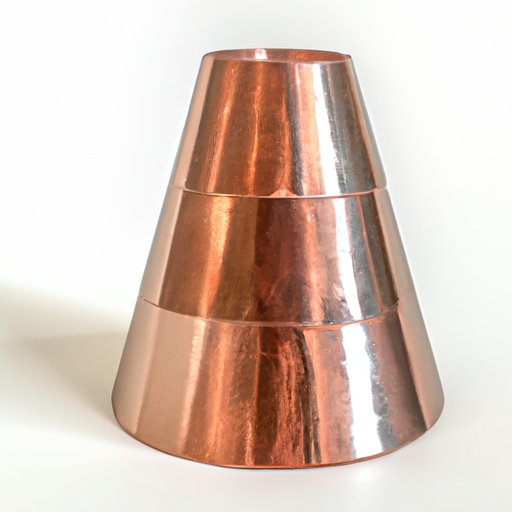Introduction
Copper is a versatile metal used in many aspects of daily life, from electrical wiring to home decor. While it is robust and long-lasting, copper surfaces can quickly lose their luster with dirt, grime, and harsh substances. Therefore, it is essential to know how to clean copper effectively to maintain its shiny appearance and functionality. In this article, we will discuss several ways to clean copper naturally, the tools and solutions required, and safety precautions to take to prevent accidents from happening.
Understanding Copper and Why It Needs Cleaning
Copper is a soft, malleable metal that oxidizes and tarnishes when exposed to air and moisture, making it appear dull and discolored. When copper surfaces are dirty and unclean, they are prone to corrosion, heat damage, or reduced efficiency. Proper cleaning and maintenance of copper pieces help prevent the negative effects and prolong their lifespan.
Step-by-Step Guide on Cleaning Copper
Cleaning copper starts with having essential tools to remove grime, oil, or dust from the surface without causing damage. Here are some common cleaning tools for copper objects:
- Mild soap and water
- Baking soda
- White vinegar
- Lemon juice
- Cotton cloths or non-abrasive sponges
After gathering cleaning tools, follow these cleaning tips:
Preparing the Surface
To prepare copper for cleaning, remove any debris and dust from the surface. If the copper object has a large build-up of dirt, rinse it with warm water and gently rub the surface with a damp, soft cloth. Be cautious not to use coarse materials, as they can scratch the copper.
Cleaning Methods
Once the surface is clean, there are several methods to clean copper surfaces. The most common techniques are:
Cleaning With Lemon Juice and Salt:
- Cut a lemon in half and dip it in salt.
- Gently rub the copper surface with the lemon and salt paste.
- Rinse the surface with water and dry with a soft cloth.
Cleaning with Vinegar and Baking Soda:
- Mix half a cup of white vinegar with two spoons of baking soda in a bowl.
- Dip a soft cloth and use it to clean the copper surface.
- Let the mixture sit for about 10 minutes.
- Rinse the surface with water and dry with a soft cloth.
Tips for Rinsing and Drying Copper
After cleaning the copper surface, rinse it thoroughly with water and pat it dry with a lint-free cloth. For best results, do not let your copper air dry since water spots can leave unpleasant marks on the surface. Instead, dry the copper with a soft towel immediately.
DIY Recipes for Natural Copper Cleaning Solutions
At times when the store-bought solutions are not readily available, there are eco-friendly cleaning solutions you can make at home. Here are a few:
Lemon and Salt Solution:
- Squeeze the juice out of a lemon and mix it with table salt until it forms a paste.
- Apply the paste to the copper surface and scrub it gently with a cloth or sponge.
- Rinse the surface with water and dry with a soft cloth.
Vinegar and Baking Soda Solution:
- In a non-metallic bowl, mix ½ cup of white vinegar and two tablespoons of baking soda until it forms a paste.
- Apply the paste to the copper surface and let it sit for 15 minutes in a well-ventilated room.
- Gently scrub the copper surface with a damp sponge or cloth.
- Rinse the surface with water and dry with a lint-free cloth.
Safety Tips for Cleaning Copper
While copper is a relatively safe material to work with, it’s crucial to take precautions while cleaning it to avoid causing any accidents. Here are a few safety measures you can take to protect yourself and your surfaces:
Choosing the Right Cleaning Tools
When cleaning copper surfaces, keep in mind that harsh tools like steel wool or metal-bristled brushes should be avoided, as they can scratch the copper and cause damages. Choose soft, non-abrasive sponges, microfiber cloths, or soft-bristle brushes instead.
Safe Handling of Cleaning Solution
It is also important to handle cleaning solutions with extreme care when cleaning copper pieces. Wear protective gloves to avoid direct skin exposure to the solutions, and ensure that the area where you work is well-ventilated. Keep cleaning solutions out of reach from children and pets, and correctly store them after use.
Maintenance Tips for Copper
To maintain the copper’s original shine and prevent tarnishing and corrosion, here are a few maintenance tips:
- Store copper items in a dry and dust-free area.
- Keep copper away from any acidic substances, such as citrus, tomatoes, or vinegar.
- Use copper cleaning solutions frequently to keep your copper surfaces shiny and clean.
The History of Copper and Its Evolution
Copper has been used since ancient times and played a significant role in human civilization’s development. It was one of the earliest metals used to manufacture tools, weapons, and household objects. Oxidation of copper played a significant role in early civilization’s beliefs, inspiring some astrological emblems.
The soft and malleable metal was used for numerous reasons, including coins and even jewelry, due to its durability and shine. The metal has a unique quality whereby it ages beautifully and naturally. Over the years, humans have utilized and advanced with the metal, learning new ways to clean it and care for it.
Conclusion
Copper is a valuable and functional material that requires regular maintenance and cleaning to maintain its appearance and effectiveness. By following our guide on natural copper cleaning solutions, you can ensure that your copper surfaces stay clean and protected. Utilizing eco-friendly natural cleaning solutions and attention to safety measures are essential to maintain and protect your copper surfaces. By practicing regular maintenance and cleaning, you can extend the life of copper and appreciate its historical significance and evolution throughout human history.
